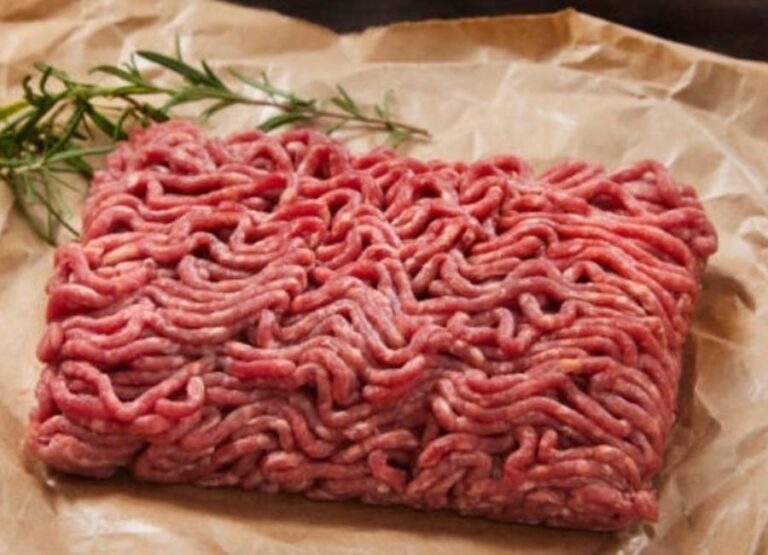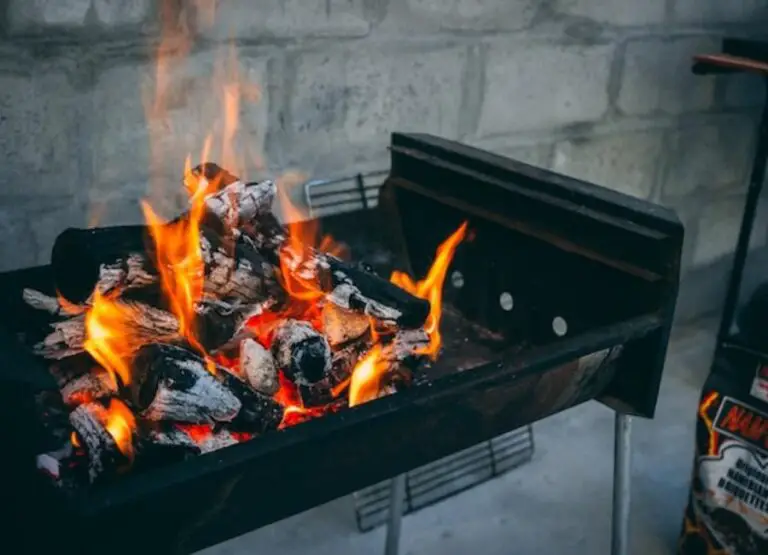Where Should Raw Meat Be Stored In A Refrigerator?
People love storing meat for weekly use and ease of use, but where should raw meat be stored in a refrigerator?
You will find out the most appropriate place or part of a refrigerator where you should store your meat.
It is important to store raw meat in the fridge, but where should you put it? There are many options.
The most popular option is to keep it in a container off the shelf, which is often also labeled for easy identification.
Some people choose to keep it on the bottom shelf of the fridge or at the back of the fridge.
However, these locations are not recommended because they are colder and bacteria may grow over time.
This article will teach you how to store raw meat in your fridge so that it stays fresh and safe.
Where should raw meat be stored in a refrigerator?
If you are storing raw meat in the fridge, you should always make sure it is stored on the bottom shelf of your refrigerator.
The reason for this is that meat can drip, leak, or have blood splatter onto other foods which can cause contamination.
You also want to put any cooked meats that are being stored in the fridge on the top shelf, so they don’t drip down onto your raw meats.
It’s also important to leave at least 2 inches of space between any dish with meat and other dishes, so there is no chance of cross-contamination.
Furthermore, store any cooked food away from raw meats, as it is possible for bacteria from raw meat to contaminate other food items.
Find out if meat really goes bad in the freezer and how long each type of meat can stay in the freezer.
Why is the bottom shelf of a refrigerator so important?
The bottom shelf of a refrigerator is so important in storing raw meat because it helps to reduce cross-contamination.
This cross-contamination, 85% of the time, occurs due to the dripping of juice from the raw meat.
So, raw meat should always be stored on the bottom shelf of the refrigerator, so that even if there is a dripping of meat juice it won’t contaminate any other food.
To minimize cross-contamination, keep your meat on the bottom shelf of your refrigerator. This is when the bottom shelf comes in handy
Find out how much meat you should eat per week.
Is it OK to leave raw meat uncovered in the fridge?
It is wrong to leave raw meat uncovered in the fridge since other food above the raw meat can drop pathogens that can be trapped in the open raw meat.
Wrapped versus unwrapped has little practical difference in spoiling time. In practice, all meals have germs that may proliferate, thus spotting is mostly a function of temperature.
Wrapping is used to prevent smells from spreading from one item to another, drying, and cross-contamination of one food by another through drips or splashes.
Wrapping offers a physical barrier to prevent infestation, although the refrigerator’s body already accomplishes so.
Storing raw meat in the fridge
There are a few safe options for storing raw meat in the fridge, but it can be difficult to know which is best.
In general, you should place raw meats on the lower shelf of your fridge, so they stay away from any foods that could contaminate them with bacteria.
Some people prefer to store raw meat in a bag or package that won’t touch other food items in their fridge to avoid cross-contamination.
If you buy a lot of meat and poultry, you might have a hard time fitting them all into the refrigerator.
Luckily, there’s an easy solution: Divide raw meats up into smaller packages and freeze what you don’t need right away.
This will make it easier to find what you’re looking for since everything will be neatly separated
The dangers of raw meat are an important topic to keep discussing.
You need to know where raw meat should be stored in a refrigerator.
If you don’t, you could contaminate other foods with bacteria that can cause foodborne illness.
Raw meat is usually placed on the bottom shelf of the refrigerator, but it should never be next to vegetables or other produce.
Raw meats contain certain types of bacteria that can spread to other foods if they touch them.
The best way to prevent this is by storing them separately.
Keep your fridge clean and organized by following these simple instructions for storing raw meat correctly!
How long can you store raw meat in the fridge?
According to Foodsguy, here is the estimated number of days meat can stay in the fridge and freezer:
| Type of Meat | Refrigerator | Freezer |
| Beef (any cut) | 3-5 days | Up to 12 months |
| Chicken/Poultry | 1-3 days | Up to 12 months |
| Pork (any cut) | 3-5 days | Up to 12 months |
| Fatty fish (salmon) | 1-2 days | About 3 months |
| Other Seafood | Up to 3 days | Up to 6 months |
How to prepare raw meat for storing in the refrigerator
Here are some common tips on how to prepare meat for refrigerating:
- Clean the fridge and mostly the freezer section of your fridge.
- Switch on the fridge for at least 30 minutes before putting it in the freezer.
- Keep the meat dry of the water droplets or meat juice.
- Cut the meat into sizable portions.
- First, wrap the meat in plastic wrap or freezer paper, or use a double layer of an airtight fridge or freezer bag.
- Followed by a layer of foil or an airtight freezer bag for an extra layer of protection.
- Squeeze out as much air as possible, but leave little room for the meat to expand while freezing or fridge.
- Place the wrapped meat at the center of the bottom shelf without it touching the walls of the fridge.
- Make sure you don’t have any other food items close to the raw meat at the bottom of the shelf.
How do I make raw meat last longer in the fridge?
The first thing you should do is double-check the temperature of your refrigerator. Many of us assume that the refrigerator is kept at the correct temperature.
If your fridge isn’t cold enough, microorganisms that cause food poisoning will be able to proliferate.
The temperature in your refrigerator should be between 0 and 5 degrees Celsius.
If you’re not sure how your fridge’s temperature setting or dial works, you may use a fridge thermometer to make sure it’s set to the correct temperature.
This temperature reduces the spread of germs that may be present in raw meat. It minimizes the risk of cross-contamination and keeps your meat as fresh as possible.
While it will not prevent bacteria from spreading, it will limit their growth and safeguard your food in general.
The most important thing is to stop the unnecessary opening of the fridge.
At what temperature should I store the meat in the fridge?
In order to reduce the spread of germs or pathogens in the fridge that may be present on raw meat, meat should be stored in the fridge at a temperature at or below 40° F (4° C) this also minimizes the risk of cross-contamination and keeps your meat as fresh as possible.
Find out more about the disadvantages of eating meat.
What to store in each section of the fridge
Here is a break-down of the section of a refrigerator and the types of food to be stored in every section of the fridge:
Bottom shelf
To prevent raw meat, poultry, and fish from contacting or leaking onto other items, keep them in sealed containers.
To avoid cross-contamination, raw meats should always be kept at the bottom of the fridge.
Make sure each item is wrapped or in a sealed container to avoid cross-contamination with other foods.
Middle shelf
Fruit, vegetables, and salad greens have been cleaned and dried before being stored.
To keep your fruit, veggies, and salad safe from contamination, wrap them in paper or plastic with air holes.
To prevent salads and herbs from drying out and to keep them fresher for longer, wrap them in a moist paper towel before storing them.
Top shelf
Dairy products, ready meals, and packed foods, leftovers, cooked meats, and prepared salads are examples of ready-to-eat foods.
To avoid infection, keep everything covered or in sealed containers.
Ready-to-eat items are kept on the top shelf of the refrigerator, away from raw foods, to prevent dangerous germs from spreading from raw to cooked meals.
Find out if you can eat meat every day and the reasons you should stop eating meat every day.
General tips for refrigerator safety of food
Here are some common tips for keeping meat and food safe in a refrigerator:
- Refrigerators should not be opened frequently, especially on hot, humid days, because this boosts the temperature.
- To reduce food odors, clean the refrigerator on a regular basis.
- Remove damaged meals as soon as possible to avoid the spread of rot to other foods.
- Raw meat, poultry, and seafood should be kept on the bottom shelf of the refrigerator to avoid cross-contamination from fluids dripping onto other items.
- To prevent fluids from contaminating other items when thawing meat in the refrigerator, place it on a plate or in a container.
- Use food that has been stored in the refrigerator as soon as possible.
- Don’t rely on the maximum amount of storage time.
- Ground beef and poultry should only be kept in the refrigerator for one or two days before cooking or freezing.
Wrapping up
Experts recommend storing raw meat on the lowest shelf so that any dripping fluids do not reach the food underneath.
You might also want to use a plate or a container to catch any raw meat fluids.
While storing raw meat in the fridge is straightforward, there are a few things to keep in mind.
Knowing how to store raw meat in the refrigerator can help keep your food safe.
Raw meats typically need to be stored on the bottom shelf of the refrigerator or freezer, away from foods that will spoil if they come in contact with it.
It’s important to store raw meats in a covered container with a label that says “KEEP FROZEN.”
This way, you’ll know when it was purchased and if it needs to be cooked before eating.






![Cooking Raw Meat In Microwave [Explained]](https://foodcreeks.com/wp-content/uploads/2023/02/Cooking-Raw-Meat-In-Microwave-768x555.jpg)
![Can You Freeze Dry Raw Meat [Answered]](https://foodcreeks.com/wp-content/uploads/2023/02/Can-You-Freeze-Dry-Raw-Meat-768x555.jpg)